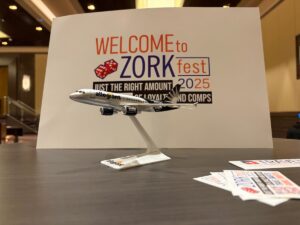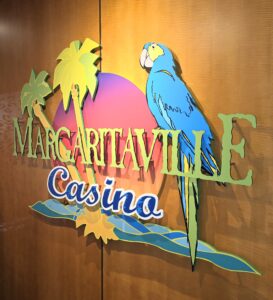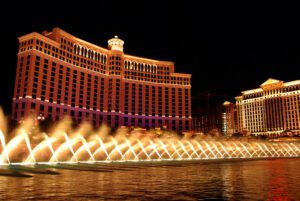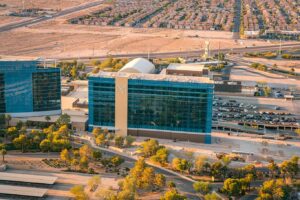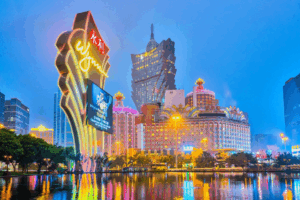When people of a certain age who have watched certain documentaries think of the Las Vegas Strip, the image of Bugsy Siegel often comes to mind. The charismatic gangster is frequently credited with inventing the world-famous boulevard. However, while Siegel played a role in its development, the Strip’s story is more complex and filled with contributions from various figures over several decades.
The Early Beginnings
The Las Vegas Strip, as we know it today, began to take shape in the early 1940s. But even before this, Las Vegas was a small town with a few hotels and casinos catering to the needs of travelers and railroad workers. The first hotel-casino on what would later become the Strip was the El Rancho Vegas, opened by Thomas Hull in 1941. Not the Flamingo by Benjamin “Bugsy” Siegel. El Rancho, located on what was then called Highway 91, set the standard for future resorts with its western-themed architecture and luxurious amenities.
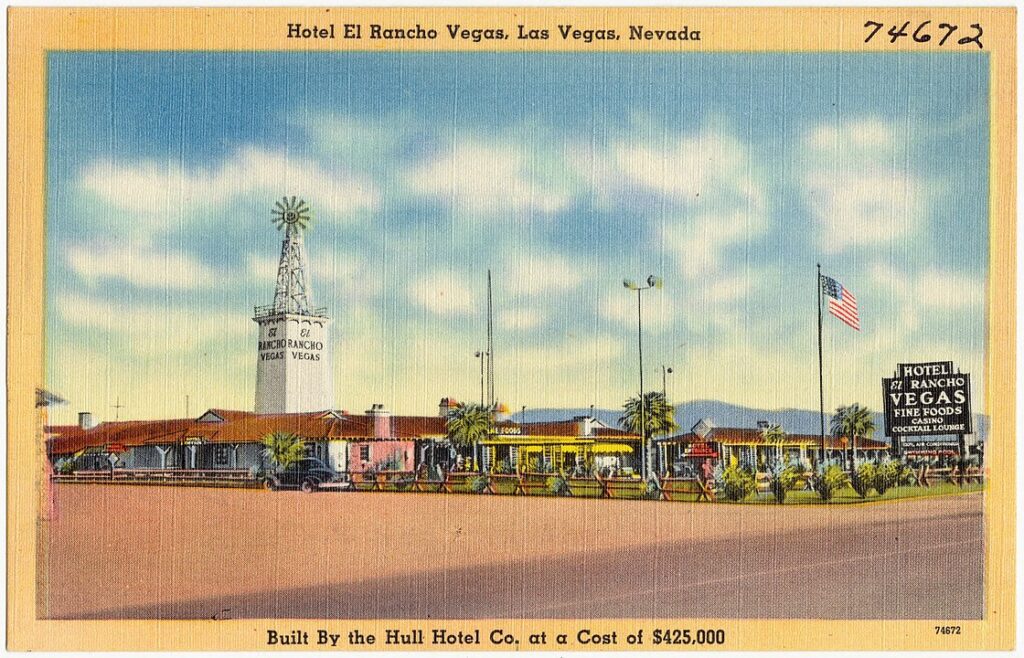
Bugsy Siegel’s Influence
Benjamin “Bugsy” Siegel is often heralded as the visionary who saw the potential of Las Vegas as a glamorous gambling destination. Even I’ll give him that. His vision was a sharp departure from the western-themed sawdust joints His most notable contribution was the strong-arming and takeover–I mean– the “development” of the Flamingo Hotel, which opened in 1946. By the way, it was a colossal failure as there were no rooms to book, the guests took their money elsewhere. The Flamingo was one of the first luxury hotels on the Strip, combining high-end accommodations, a casino, and top-notch entertainment. Siegel’s vision was indeed transformative, bringing Hollywood glitz and celebrity cachet to Las Vegas. However, the narrative that he single-handedly invented the Strip is an over-simplification.
Other Key Players
Several other pioneers were instrumental in shaping the Las Vegas Strip. Thomas Hull’s El Rancho Vegas was a precursor to the Flamingo, proving that a resort hotel could thrive in the desert. Guy McAfee, a former Los Angeles vice squad captain, opened the Pair-O-Dice Club in 1931 and later the Frontier Hotel, further establishing the Strip’s potential.
Additionally, Wilbur Clark, who opened the Desert Inn in 1950, and Jay Sarno, who introduced the concept of themed resorts with Caesars Palace in 1966, were pivotal in the Strip’s evolution. Going further, let’s add Howard Hughes and Steve Wynn to the mix. Each of these visionaries contributed unique elements that helped Las Vegas become the entertainment capital of the world.
The Role of Organized Crime
While Bugsy Siegel’s association with the Mafia has been romanticized, it is essential to acknowledge the broader involvement of organized crime in Las Vegas’s development. Figures like Meyer Lansky, Moe Dalitz, and others had significant stakes in various casinos, using the city as a hub for their operations. Their investments and influence were critical in the rapid growth and success of the Las Vegas Strip during its early years.
The Modern Strip
The Las Vegas Strip continued to evolve well after Siegel’s death in 1947. The post-World War II boom, coupled with the advent of jet travel, brought millions of tourists to Las Vegas. The construction of mega-resorts like the Mirage, Bellagio, and Venetian in the late 20th and early 21st centuries further cemented the Strip’s status as a premier global destination.
Conclusion
While Bugsy Siegel’s contributions to the Las Vegas Strip were significant, it is a stretch to say he invented it. The Strip’s development was a collaborative effort involving many visionaries, wise guys, and corporations, each adding their unique touch to the city’s vibrant tapestry. Siegel’s legacy, though enduring, is just one chapter in the fascinating story of Las Vegas.
The next time you stroll down the Strip, remember the diverse cast of characters who turned a dusty stretch of highway into the glittering boulevard we know today. From hoteliers and mobsters to architects and entertainers, their collective efforts created the iconic destination that continues to captivate millions of visitors each year.


